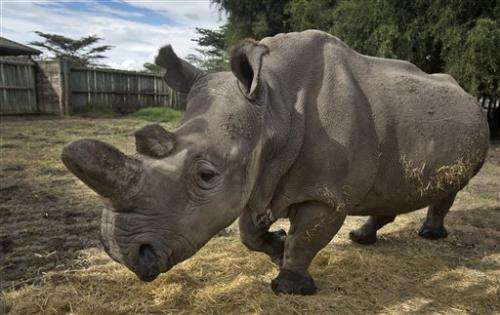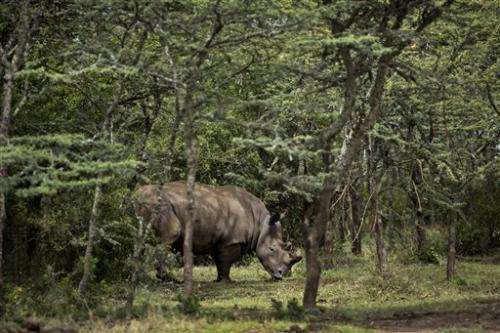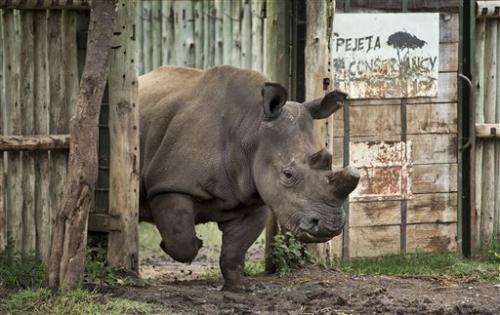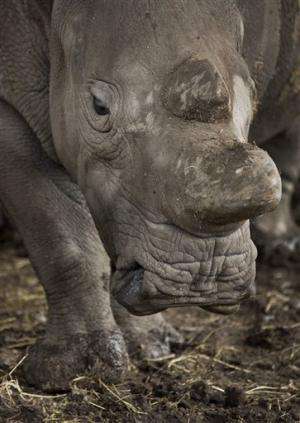Rhino species to die unless science can help
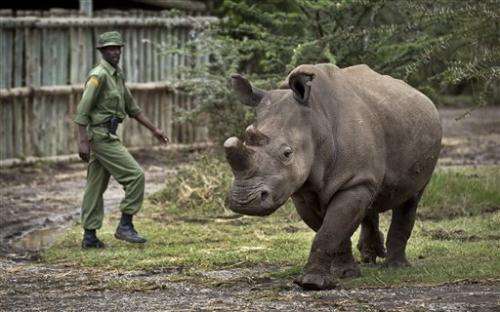
The task was never going to be easy: Fly four highly endangered rhinos from a Czech Republic zoo to East Africa, drive them to the savannah grasses of Mount Kenya and hope that the natural environment helps produce a calf, staving off extinction.
The experiment has all but failed.
The keepers of three northern white rhinos in Kenya—half of the world's remaining rhinos of that species—have begun saying publicly for the first time that their one male and two female rhinos will certainly not reproduce naturally.
The silver lining, though, is science. Efforts will now be made to keep the species alive through in vitro fertilization, and possibly by working with the rhinos' genetic material in a budding field known as de-extinction.
"We always knew from the very beginning that the chances of this working were small even if they bred," said Richard Vigne, chief executive of the Ol Pejeta Conservancy, where the rhinos have lived since December 2009.
The conservancy said in a statement Wednesday that artificial reproductive techniques "could provide the last chance of survival for the world's most endangered mammal."
That echoed the phrase written on the wooden crates the rhinos were transported in from Nairobi to Ol Pejeta: "Last Chance to Survive."
Some animal experts at the time said the effort was too little, too late, and that the experiment's budget could have been better spent on other conservation projects. But the bulk of the more than $100,000 effort came from a donor—Alastair Lucas, then the vice chairman of Goldman Sachs in Australia—who wanted to see the project carried out.
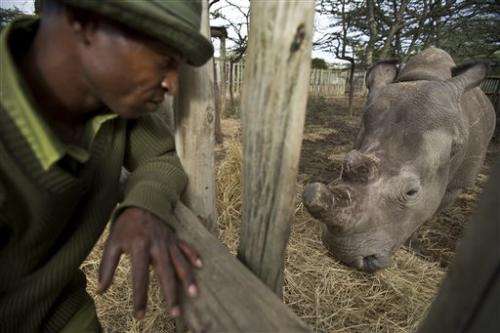
Vigne said the project was not done in vain.
"They've been returned to Africa from a zoo, and they've thrived in that environment. In that way it's been a success," he said. "The fact they haven't bred is clearly a massive disappointment, but there are new technologies being invented all the time to rescue technically extinct species."
One of the two male rhinos transferred to Ol Pejeta died of an unknown cause earlier this year. Veterinarians that examined the remaining three last month determined that the male's sperm count is very low and that the two females either cannot get pregnant or not carry a pregnancy to term.
The loss of the last six northern white rhinos does not signal the end of the rhino. Southern white and black rhinos still exist in bigger numbers. But southern white rhinos cannot live in central Africa.
The in vitro fertilization experiment could take place with a southern white surrogate mother. And Vigne said scientists are working with old genetic material to see if they can resurrect the passenger pigeon or dodo bird. By contrast, he noted that the genetic material from northern whites is still alive.
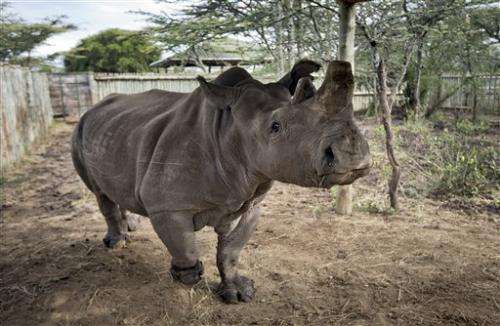
Ol Pejeta sits on a high-elevation plain in view of Mount Kenya's slow and ominous rise. The conservancy has 104 black rhinos and 26 whites—mostly of the southern variety. Because of increasing demand for rhino horn in Vietnam—a phenomenon that has resulted in more than 3,000 rhinos killed by poachers in South Africa since 2010—the animals must be closely guarded.
Mohamed Doyo is one of the rhinos' main keepers. He rubs their back and hind legs when they are inside their smaller wooden pens. And he helps shoo them outside into the much bigger penned area where they can roam. He points out how Najin, the 25-year-old female rhino, has a pronounced limp, one of the reasons she likely cannot bear a calf. He blames it on her time in her concrete zoo pen.
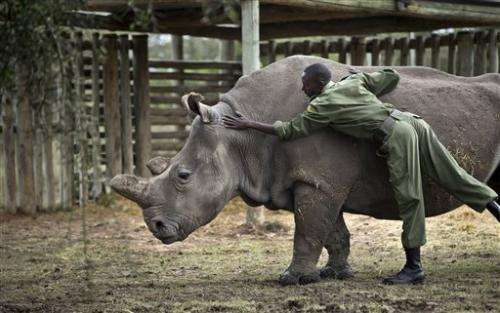
The northern white rhino is a major mammalian species that is "probably or potentially" going to become extinct in the coming years, Vigne said, notwithstanding new reproductive technology.
"And to me that's a real indictment of the human race," he said. "We're all responsible for it, and to stand by and watch it happen ... I think would have been horribly wrong."
-
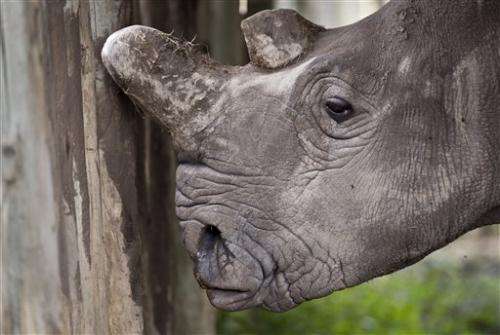
In this photo taken Monday, Dec. 1, 2014, female northern white rhino Najin stands in her pen where she is being kept for observation at the Ol Pejeta Conservancy in Kenya. The keepers of three of the last six northern white rhinos on Earth said Wednesday, Dec. 10, 2014 that it is highly unlikely the three will ever reproduce naturally, with recent medical examinations of them showing the species is doomed to extinction, unless science can help. (AP Photo/Ben Curtis) -
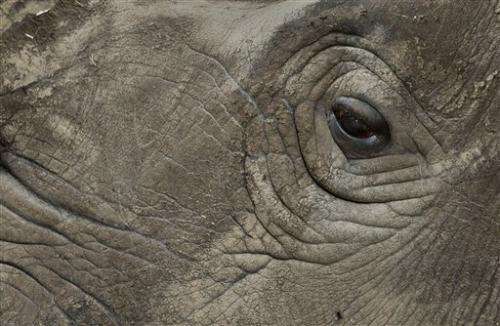
In this photo taken Monday, Dec. 1, 2014, female northern white rhino Najin stands in her pen where she is being kept for observation at the Ol Pejeta Conservancy in Kenya. The keepers of three of the last six northern white rhinos on Earth said Wednesday, Dec. 10, 2014 that it is highly unlikely the three will ever reproduce naturally, with recent medical examinations of them showing the species is doomed to extinction, unless science can help. (AP Photo/Ben Curtis)
© 2014 The Associated Press. All rights reserved.
